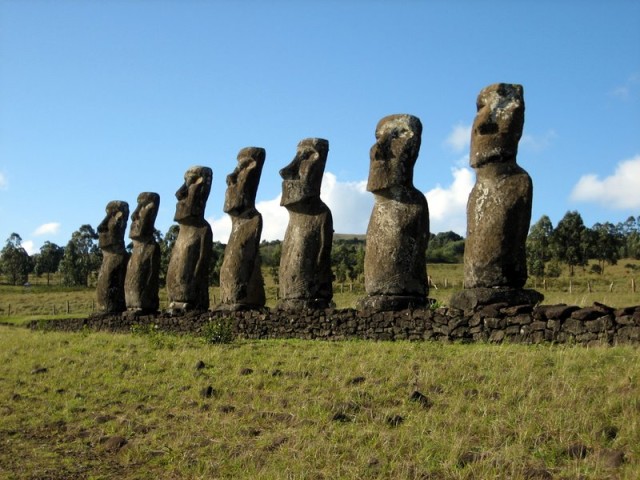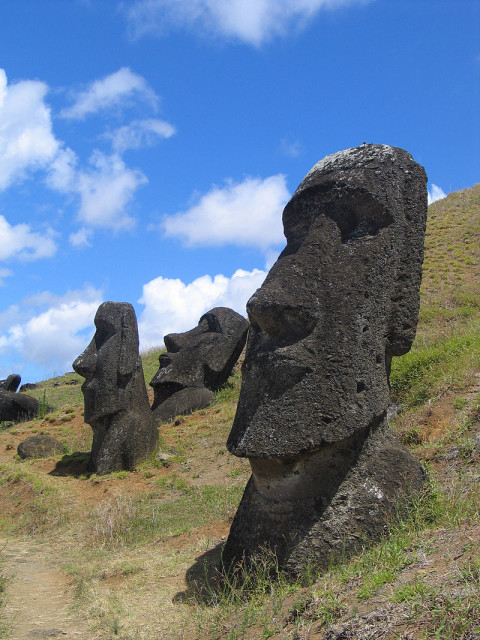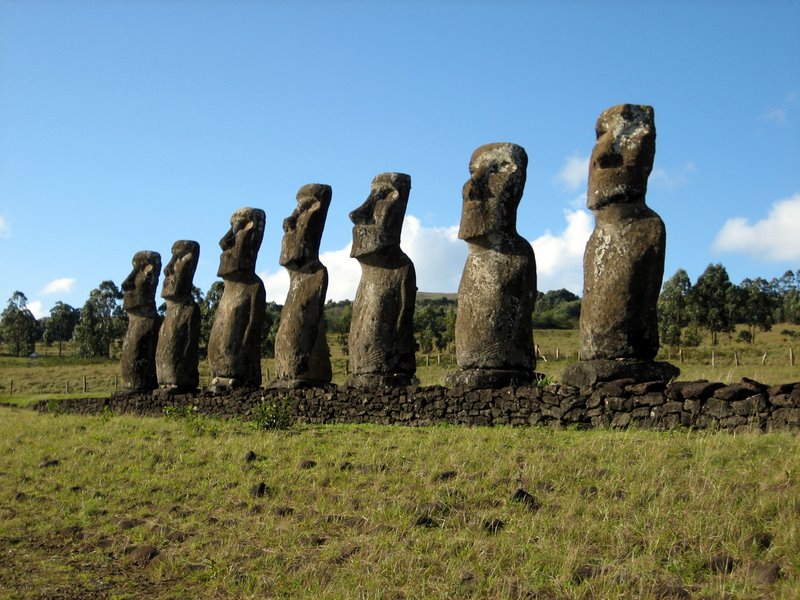It has traditionally been thought that environmental destruction and warfare were the root cause of the societal and economic collapse of a small island located 2,150 miles off the coast of Chile. The demise of Easter Island has been used as an example for humans to take more caution – it has served as a cautionary story to mitigate violent and environmentally destructive policies.
In the last ten years, archeologists have started to push back against this common understanding. Based on fieldwork and research conducted on the island (also known as Rapa Nui) there seems to be a different story unfolding. It appears that the disease and slavery that was brought by Europeans is ultimately what caused ecocide and the destruction. A journal entry in Antiquity published a study to further support this newer line of thinking.
All across the island there are thousands of small, sharp objects carved from obsidian, a rock made of volcanic glass. For many centuries, it has been assumed that these implements were used as spear points. They are triangular shaped and known in the indigenous Rapanui language as mata’a. European explorers called these devices spears once they began arriving on the island in 1722.

A team of scientists has analyzed 423 mata’a. The conclusion is that they “were not specifically designed for interpersonal violence but were general purpose tools that may have been used for peaceful tasks such as agriculture, ritual scarification, even tattooing.”
The Washington Post reported that pieces of glass would not have made good weapons. They also were not similar to other types of spears found in similar civilizations. It is these weapons that likely led to the collapse of the civilization. Carl Lipo is an anthropologist and director of Binghamton University’s environmental studies program. She is the study’s lead author and spoke to the BBC. She said, “And what we found was there was no evidence, in fact, to support that these were used in a systematic, lethal fashion and that they’re best explained as cultivation tools and things used in daily household activities.”
When he spoke to NPR through email, Lipo explained that lethal weapons used in combat are typically long, narrow, symmetric, and pointed. This makes them well-suited for piercing one’s internal organs. Weapons shaped like this are best utilized during hand to hand combat, or when you need to dispatch the enemy as quickly as possible. According to Lipo’s notes on Easter Island, “We find anything but long, thin, narrow, pointed —we find any range of shapes, lack of symmetry, non-pointedness, thick objects that had sharp edges (as volcanic glass) but were nearly useless in the ‘lethal spear’ sense. When we compare the mata’a shapes with other Polynesian weapons that seemed to be used as actual spears … they are completely different. What they most closely resemble are objects that are used in a general fashion as scrapers [or] cutting implements.”

Although even if the mata’a were not arrow-shaped or conducive for stabbing, it may not matter and according to the Christian Science Monitor. The glassy objects located at the end of the stick would still be able to cause some serious damage if used as a slashing weapon.
Lipo pointed out that no one has found evidence of defensive structures that would indicate war took place. Other islands have had lethal, inter-group warfare with fortresses built up on hilltops. Hilltops were the most strategic places to defend whenever weapons are involved. But that is just not visible anywhere on Easter Island.
Want articles by The Vintage News delivered straight to your inbox? Subscribe to our weekly newsletter!
Furthermore, Lipo and the other authors involved in the study noted: “Rock throwing from high points was the primary way in which native Rapanui fought Europeans and would have more probably been used as a mode of lethal force more than mata’a. This conclusion does not imply that prehistoric islanders did not experience violence, only that mata’a do not appear to be related to systemic warfare where performance as lethal weapons would be paramount.”
